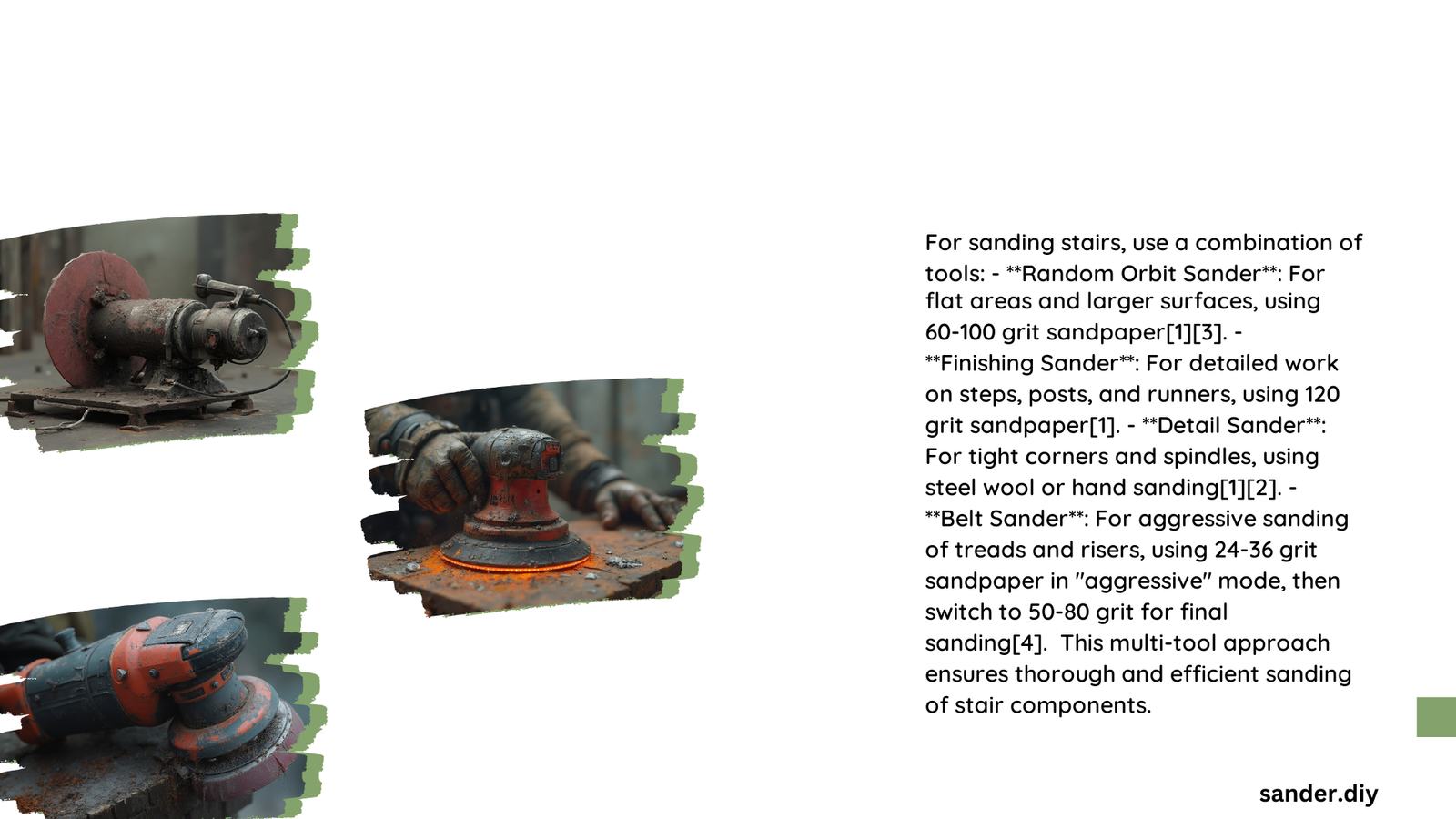Choosing the right sander for sanding stairs is crucial for achieving a smooth, professional finish on wooden staircases. This guide explores various types of sanders suitable for stair renovation, including belt sanders, orbital sanders, and edge sanders. We’ll compare features, discuss techniques, and provide recommendations to help you select the best sander for your stair sanding project.
What Are the Key Features of a Sander for Sanding Stairs?
When selecting a sander for stair renovation, several key features should be considered:
- Size and Weight: A compact and lightweight sander is essential for maneuvering on stairs.
- Power: Adequate power is needed to sand hardwood effectively.
- Dust Collection: Efficient dust collection systems are crucial for maintaining a clean work environment.
- Versatility: The ability to sand both flat surfaces and edges is important for stairs.
Let’s examine some specific sanders that excel in these areas:
Belt Sanders for Stairs
- Makita 9404 Belt Sander
- Size: 4 x 24 inches
- Motor: 11 amps
- Weight: 6 kg (13.2 lbs)
-
Features: Includes a bench adapter for extended use
-
Mac Allister MSBS900 Belt Sander
- Size: 3 x 21 inches
- Motor: 7 amps
- Weight: 3 kg (6.6 lbs)
- Features: Lightweight and affordable
Edge Sanders for Stairs
- Lagler Flip Edger
- Motor: High suction power
- Weight: Lightweight with glass fibre reinforced plastic construction
-
Features: Ergonomic design, almost dust-free operation
-
Bona Edge XL
- Motor: 1.8 HP, 115 Volt
- Weight: 32 lbs
- Sanding Disc Size: 7 inches
- Features: 270-degree rotating handles, GREENGUARD certified
How Do Orbital Sanders Compare to Electric Sanders for Stair Risers?

Orbital sanders and electric sanders each have their strengths when it comes to sanding stair risers. Let’s compare their features:
Orbital Sanders
- Skil 1.2 Amp Multi-Sander SR232301
- Type: Orbital
- Power: Corded, electric
- Weight: 2.4 pounds
- Speed: 13,500 OPM
-
Features: Ergonomic grip, various attachments for tight spots
-
Ryobi Cat Finish Sander
- Type: Orbital
- Power: Cordless, li-ion battery
- Weight: 1.54 pounds
- Speed: 11,000 OPM
- Features: Compact, minimal vibration
Electric Belt Sanders
- Makita 9404 Belt Sander
- Type: Belt sander
- Power: Corded, electric
- Weight: 6 kg (13.2 lbs)
- Speed: Up to 1,640 FPM
- Features: Powerful, suitable for heavy-duty work
Key differences between orbital and electric belt sanders:
| Feature | Orbital Sanders | Electric Belt Sanders |
|---|---|---|
| Mobility | Lighter, more versatile | Heavier, better for large areas |
| Grit Compatibility | Various grits, finer finish | Various grits, more aggressive |
| Dust Collection | Generally better | May require frequent emptying |
What Are the Best Techniques for Using a Sander on Stairs?
To achieve the best results when sanding stairs, follow these recommended techniques:
- Start with Coarse Grit: Begin with 80-grit sandpaper to remove old finishes and smooth the wood.
- Sand with the Grain: Always sand in the direction of the wood grain to avoid cross-grain marks.
- Progress to Finer Grits: Gradually move to finer grits (120, 150, 220) for a smoother finish.
- Adjust Speed Settings:
- For orbital sanders: Use moderate to high speed depending on grit and surface.
- For belt sanders: Use full speed for aggressive sanding, reduce for finer grits.
- Control Pressure: Apply consistent, moderate pressure to avoid gouging the wood.
Safety Precautions
- Wear protective gear (safety glasses, dust mask, gloves)
- Secure the work area
- Use a dust collection system or vacuum
What Are the Costs and Maintenance Requirements for Stair Sanders?
Understanding the costs and maintenance requirements is crucial when choosing a sander for stairs:
Purchase Costs
- Orbital Sanders:
- Skil 1.2 Amp Multi-Sander SR232301: $50-$70
- Ryobi Cat Finish Sander: $70-$100
- Belt Sanders:
- Makita 9404 Belt Sander: $150-$250
- Mac Allister MSBS900 Belt Sander: Approximately half the price of the Makita
Maintenance and Accessories
- Sandpaper: Regular replacement needed, cost ranges from $5-$20 depending on type and grit.
- Dust Bags: Replacement or frequent emptying required, cost around $10-$20.
- Battery Replacement (for cordless models): $20-$50 depending on brand and quality.
By considering these factors, you can choose the most suitable sander for your stair sanding project, ensuring efficient work and a professional finish.
Reference:
1. https://www.bobvila.com/articles/best-detail-sander/
2. https://www.bowenhardwood.ca/tools-equipment
3. https://www.diynot.com/diy/threads/belt-sander-for-stair-treads-and-risers.566566/
4. https://www.thisoldhouse.com/woodworking/82937/best-belt-sanders
5. https://www.popularmechanics.com/home/tools/g26626730/power-sanders/
